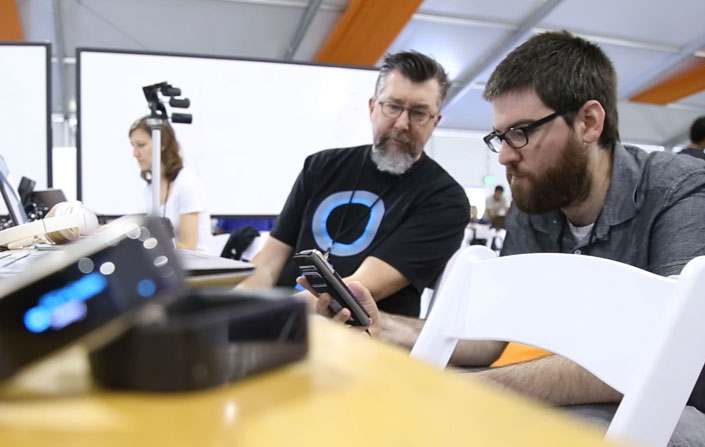Microsoft hackathon makes advances on homefront and front lines
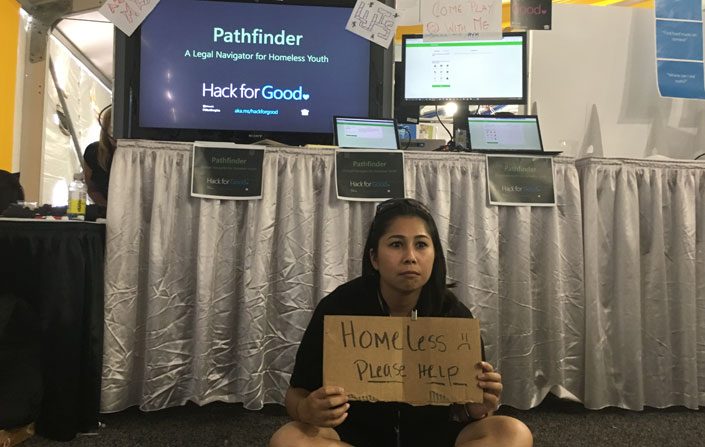
In late July, 14,000 Microsoft employees carved a week out of their schedules to drive the next wave of innovation across the company. The third annual //oneweek Hackathon event included more than 3,200 individual hackathon projects, and many former servicemen and women were among those who participated. Here are a few of their stories.
Fighting for the homeless
Imagine not knowing where you’ll sleep or eat your next meal. For Ryen Macababbad, Azure Active Directory program manager and sergeant in the Army Reserve, this was part of growing up in foster care and living on the streets to escape an abusive foster home. From these difficulties she learned the importance of self-reliance and to trust no one but herself.
“I felt absolutely alone and powerless and like everything around me was about keeping me down and not lifting me up,” says Macababbad.
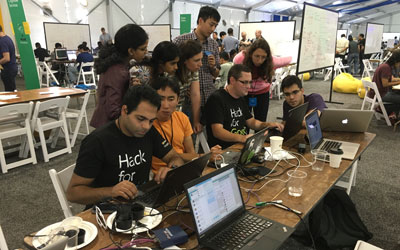
The Microsoft //oneweek Hackathon provided Macababbad with an opportunity to leverage her personal experience and help youth who are currently experiencing homelessness. These youth don’t have access to attorneys or reliable legal advice, so a group of volunteer attorneys developed a legal guide for homeless youth, “The Homeless Youth Handbook.” But in its 300 pages of legal advice, homeless youth had trouble finding relevant information.
Macababbad’s hacking team developed a solution: an online tool that could help youth access only the legal information relevant to them. The tool uses artificial intelligence to ask youth factual questions, much like those an attorney would ask, about their circumstances and, based on their answers, presents only the information relevant to them.
The challenge? Developing a computer system that can drive such a conversation. That’s where Macababbad’s background came in.
“Suppose you start a conversation with a complete stranger, with the goal of giving them relevant legal advice in 20 questions or less,” says Yossi Banai, the project lead. “Replicating that experience online requires an understanding of the user, and having someone with personal experience, like Ryen, was invaluable.”
The hacking team’s goal was to build a working prototype for an online legal advisor, using real data, to prove that it’s possible. With Macababbad’s contribution, the team successfully built a working prototype that forms the foundation for a solution to help homeless youth.
Increasing situational awareness
As an air traffic controller in the Air National Guard, Jesse Phillips-Mead was trained to maintain situational awareness and to prioritize and communicate effectively in rapidly changing environments. Now Phillips-Mead works as master scheduler for the Microsoft Cloud and Infrastructure Organization and continues to serve in the Air National Guard.
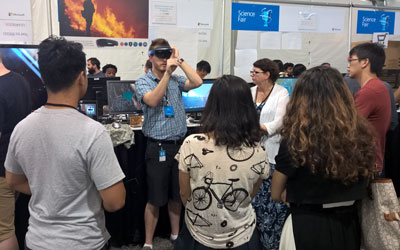
For this year’s //oneweek, he was especially drawn to the “Augmented Operations Center” project, which was all about creating an easier way to set up a tactical operations center (TOC). In a crisis event, TOCs serve as an information hub, are manned by 10 to 15 people, and contain enough TVs, computers, transmitters and other technology to stock a big-box electronics store.
Setting up a TOC typically takes several hours, but by using Microsoft HoloLens nine employees developed an augmented operations center for a forest fire scenario that can be staffed by as few as three people and set up in only 10 to 15 minutes — an especially critical improvement given how frequently a TOC must be taken down and moved to a new location.
The biggest draws for Phillips-Mead were being part of a team of former service members, working with familiar weather forecasting tools like METAR, and having the chance to work with HoloLens, one of Microsoft’s most exciting technologies.
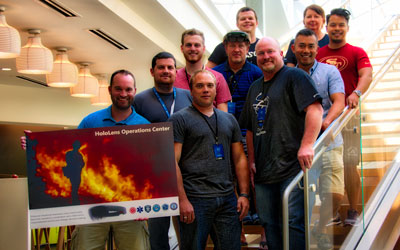
One of HoloLens’ biggest selling points was its ability to bring in real-time data and enable each person in the TOC to perform a particular job, while also creating a Common Operating Picture shared by the whole team. And because fewer people are needed to staff the TOC, additional resources can be brought to bear on the front lines or to support other operations.
“When the National Guard is called up on to fight a fire, we are either cutting fire lines or in the TOC,” says Phillips-Mead. “Thanks to HoloLens, that could lead to fewer people in harm’s way and more people assigned to staging equipment for the field.”
Offering unwavering support
When Tim Bakke served in the Marine Corps during the 1980s and ’90s, it was a time of relative peace, whereas the current generation of soldiers routinely serve multiple tours of duty and some return home with post-traumatic stress disorder, or PTSD.
Today, Bakke is a senior product marketing manager for Microsoft Devices, and when he heard about the //oneweek PTSD hacking team led by Jon Campbell, he had no doubt about joining forces.
“Every time I talk to a veteran about this project, the response is profound,” says Bakke. “What Jon and the rest of the folks started is really powerful and it’s essentially the reason why I got into technology, because of its potential to make a difference in peoples’ lives.”
As a research software development engineer at Microsoft Research, Campbell focuses on restoring capabilities to people with disabilities. What got him started on the PTSD project was a conversation with his wife, a child and a family therapist, about unmet needs in mental health care.
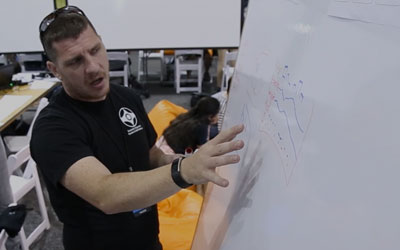
Last year, Campbell’s //oneweek Hackathon focused on identifying how technology could improve treatments for mental health patients. This year he took that same project to the next level with eight to 10 employees who created Emotion Band, a software app specifically for PTSD that runs on Microsoft Band, a combination smart watch and fitness band that offers a convenient and fairly inconspicuous platform with a variety of built-in sensors.
Emotion Band works in two ways: To set it up, you list out the trigger events you want to catalogue, identify someone to whom you could reach out during an attack, and set up a code in advance. If you feel anxious, simply swipe to get to the app, tap the emotion you’re feeling and tap to send a message to your friend with your location. This enables someone you trust to come and lend support or pull you out of a PTSD-triggering event.
The app can also track biometric data (heart rate, skin temperature, how you are feeling, etc.) and correlate it against your location, time of day and more. You can then visualize all of that data and look for any trends or clues about possible triggers, or share that data with a healthcare provider to get a better diagnosis.
Based on their experience in the Hackathon, Bakke and Campbell are both hopeful about how technologies like the Emotion Band could improve treatment for patients suffering from PTSD and other mental illnesses.
